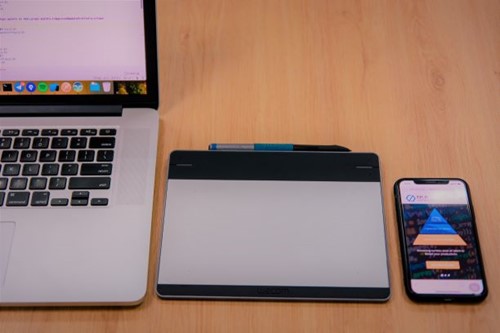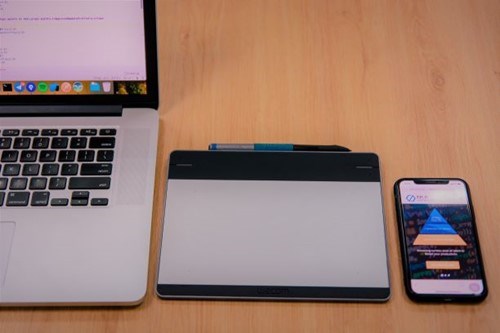
Top 5 Advantages of using Flutter for Mobile Application Development
When it comes to mobile application development, many companies often encounter the issues of budget limitation and also the need to introduce the app to market within a short period of time.
Native app development for both iOS and Android require mobile developers to create two code base with different technology stacks for one app, resulting in longer development time and higher costs. In recent years, cross-platform app development has emerged as a solution that can help reduce cost and speed up the time-to-market while still ensuring high quality.
Generally speaking, native mobile app development (Java/Kotlin for Android, Swift/Objective-C for iOS) usually provides an overall better app experience to users, compared to cross-platform apps which could be quite not as smooth or seamless. However, similar to React Native solution, Flutter has recently gained popularity from the app developers’ community as one of the preferred cross-platform solutions.
Browsing the app store to check out a number of cross-platform apps created using Flutter, users probably cannot tell those Flutter apps apart from other native apps as the app performance is almost identical to native ones, which is just as seamless and smooth.

Many app owners have decided to adopt Flutter for their app development requirements and fell in love with it as Flutter made cross-platform app development become a lot more efficient and interesting. Flutter seems to be a highly promising mobile app solution. So, what are the advantages of Flutter that make app development companies use it?
What is Flutter?
According to Flutter.dev: “Flutter is a mobile app SDK for building high-performance, high-fidelity, apps for iOS and Android, from a single codebase.”[1] Indeed, Flutter has been around for a while and was first introduced in 2015 at the Dart developer summit under the project name called “Dart on Android”[2]. Flutter 1.0 was the first stable version released in Dec 2018.
Flutter is open source and powered by the Google-developed Dart language. Today, Flutter is getting more attention with recent adoption by some big companies like Alibaba and Tencent for their mobile app development requirements.
Here are the Top 5 Advantages of Flutter for Mobile Application Development:
Quick and efficient development
One of the most prominent advantages of using Flutter is “Hot Reload” which allows developers to instantly see the changes they made in the app. This means mobile developers can instantly experiment and test to see how the new added features work on the app, the changed code is reflected on the app while running without a need for a restart.Overall, Flutter offers an easy and quick solution for mobile app development, allowing great flexibility for developers to quickly build new UI, and incorporate new features as well as bug fixing. Flutter makes cross-platform apps running seamlessly, just like native apps.
Additionally, Flutter SDK is powered by Dart programming language – which supports asynchronous operation and allows execution of the code that might take a while to complete, while at the same time does not block the execution of the rest of the code. This is important, especially when the app users are in the main UI thread as it will help keep the UI smooth while dealing with other events occurring in the code [3].
Cross-platform development: speed-up time to market and reduce overheads
As mentioned previously, developing native mobile applications can be very time consuming since developers need to create different codebase for each version (Android and iOS). With Flutter, developers only have to write one single codebase which can be used on both mobile OS. This helps app owners save resources and speed-up time-to-market. Also, as a consequence, because there is only one version of the app developed for both platforms, QA and testing process will only have to be done once (except in some exceptional cases).
Moreover, when it comes to mobile app testing with Flutter, as long as there is a working device or simulator available, building and running an app for testing is as simple as a mouse click.
UI Development
UI development is one of the aspects that many mobile developers, especially ones who lean towards back-end development, do not seem very excited about. Flutter makes it easier for mobile developers when it comes to UI development by providing a rich set of custom and ready-made widgets, allowing developers to create UI by utilizing these widgets and change them to meet the look and feel of the app.
For example, developers can use widgets such as Row, Column, and Container for layout, and Text widget for app content, together with many more in order to control and make the UI appear as they like. Additionally, the “ThemeData” feature in Flutter allows developers to set value the color, font type, and size, keeping the look of the app consistent.
Also, as mentioned previously, the hot reload feature allows developers to implement changes and instantly see the results without having to restart the app, and this makes UI development quicker than ever.
Libraries
In addition to out-of-the-box features, there are times that developers might need some extra functionalities or third-party packages for their mobile development requirements. As Flutter is still relatively a new technology, the available libraries for it is still quite limited compared to other existing technology such as React Native. However, the community and support for Flutter is growing at a rapid pace with more and more developers contributing to creating new packages as well as solving existing issues.
Final Thoughts
Flutter offers many benefits to businesses for their custom mobile app development requirements. Flutter allows mobile developers to build brilliant mobile apps with beautiful design and high-level performance. App owners will find that creating mobile applications in Flutter is much faster than native, helping them to significantly reduce the time and resources required for development without compromising quality.
Side-note:
TP&P Technology is a leading Vietnam software development company providing full-cycle mobile app development services. Contact us today to find out how we can help with your mobile app development requirement.
References:
1. https://flutter.dev/docs/resources/technical-overview
3. https://buildflutter.com/flutter-threading-isolates-future-async-and-await/



